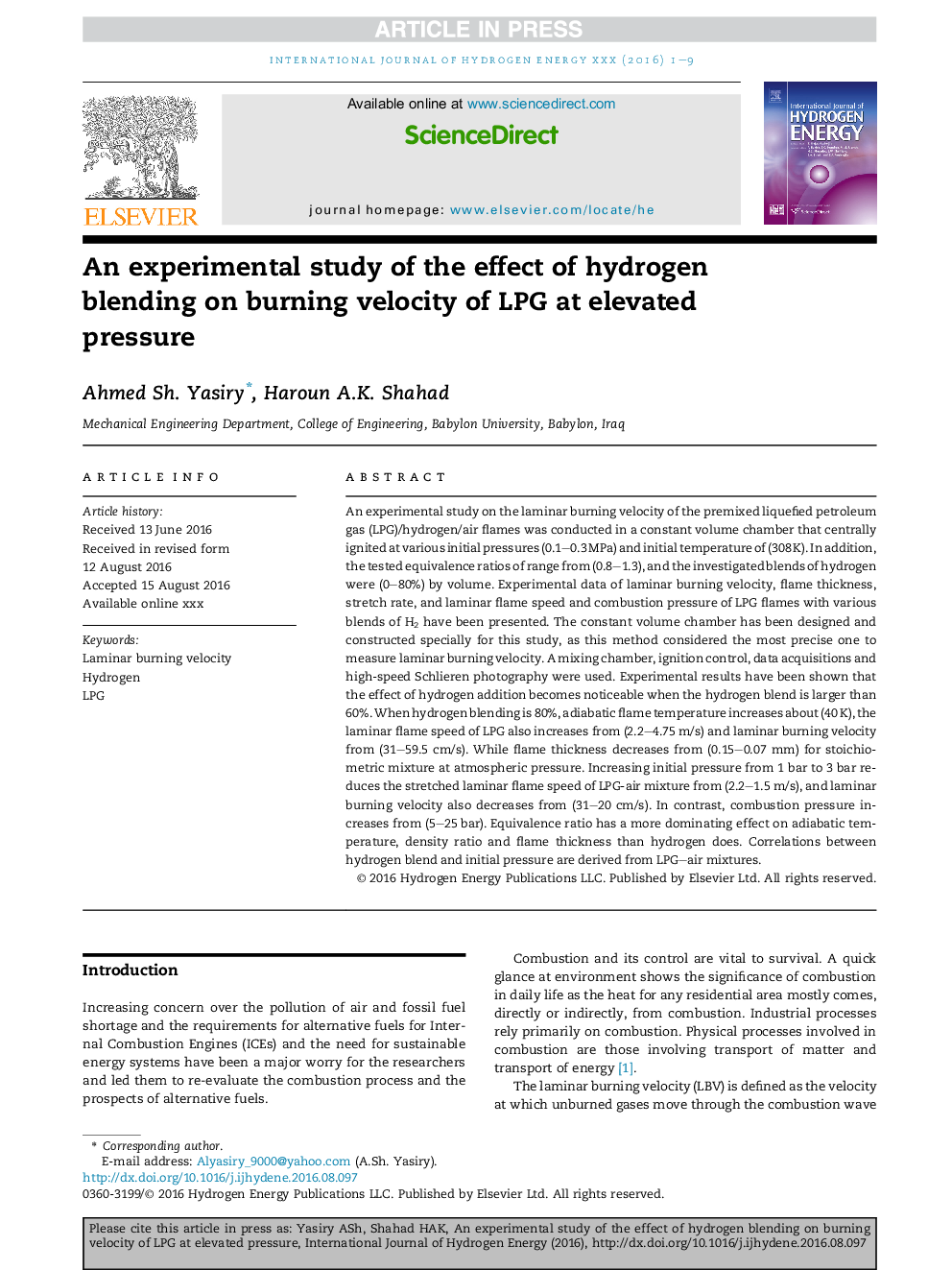| Article ID | Journal | Published Year | Pages | File Type |
|---|---|---|---|---|
| 5147175 | International Journal of Hydrogen Energy | 2016 | 9 Pages |
Abstract
An experimental study on the laminar burning velocity of the premixed liquefied petroleum gas (LPG)/hydrogen/air flames was conducted in a constant volume chamber that centrally ignited at various initial pressures (0.1-0.3Â MPa) and initial temperature of (308Â K). In addition, the tested equivalence ratios of range from (0.8-1.3), and the investigated blends of hydrogen were (0-80%) by volume. Experimental data of laminar burning velocity, flame thickness, stretch rate, and laminar flame speed and combustion pressure of LPG flames with various blends of H2 have been presented. The constant volume chamber has been designed and constructed specially for this study, as this method considered the most precise one to measure laminar burning velocity. A mixing chamber, ignition control, data acquisitions and high-speed Schlieren photography were used. Experimental results have been shown that the effect of hydrogen addition becomes noticeable when the hydrogen blend is larger than 60%. When hydrogen blending is 80%, adiabatic flame temperature increases about (40Â K), the laminar flame speed of LPG also increases from (2.2-4.75Â m/s) and laminar burning velocity from (31-59.5Â cm/s). While flame thickness decreases from (0.15-0.07Â mm) for stoichiometric mixture at atmospheric pressure. Increasing initial pressure from 1Â bar to 3Â bar reduces the stretched laminar flame speed of LPG-air mixture from (2.2-1.5Â m/s), and laminar burning velocity also decreases from (31-20Â cm/s). In contrast, combustion pressure increases from (5-25Â bar). Equivalence ratio has a more dominating effect on adiabatic temperature, density ratio and flame thickness than hydrogen does. Correlations between hydrogen blend and initial pressure are derived from LPG-air mixtures.
Keywords
Related Topics
Physical Sciences and Engineering
Chemistry
Electrochemistry
Authors
Ahmed Sh. Yasiry, Haroun A.K. Shahad,
